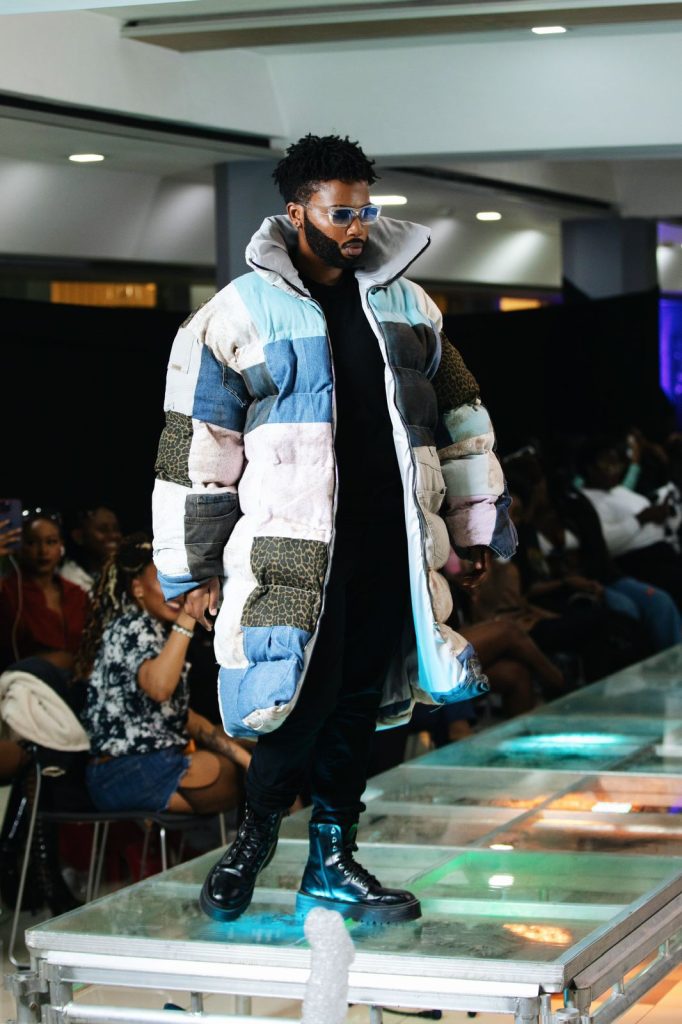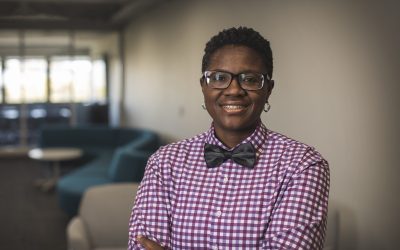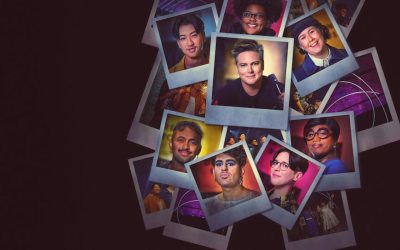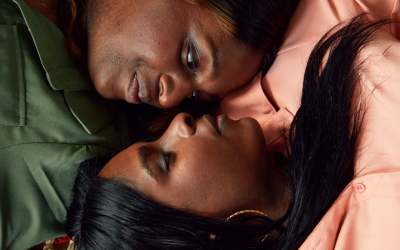TAP INTO MAJIC’S DRAG WORLD

Kenya’s drag artistry scene has found a new vibrant life, in a dazzling whirl of bright lights, music, and self-expression. Meet Majic, a captivating drag performer who recently relocated to Kenya from the USA. His journey is nothing short of remarkable, and his story unfolds at the intersection of art, identity, and the celebration of LGBTQ History.
As you read through, prepare to be inspired by Majics’s dedication to transforming not only his own life but the landscape of LGBTQ+ acceptance in his new homeland. Through the lens of his enchanting performances and heartfelt advocacy, discover the power of drag to transcend borders and bring people together in the name of love, pride, and history.
M: Who is Majic?
Majic: Majic started off as a stage character but over time, I just began to embody Majic as my being. What started off being performative ended up being permanent. Everyone calls me Majic now. I really enjoy taking up space in a way that’s different than I have been in the past and my persona is no longer a character, it is who I am.
M: How did the drag artistry journey begin from the USA to Kenya with Kings of Kenya?
Majic: The journey has been… it’s been a long journey. It’s been a turbulent one. it’s been a joyful one. There’s been a lot of different things happening within the community and the spaces that I occupy. When I first started drag it came from a place of seeking a place for me to feel safe enough for me to express myself to my fullest. The first ten years of my life were spent in Dandora and then after that, my family relocated to the US for 17 years. Growing up in an African household, as you can imagine there wasn’t a lot of space for anything that was different, mum and dad wanted me to go to school, go to college, do this, do that. The older I got the more I started figuring out that I was gender-non-conforming, I was non-binary, I was queer, all these different things that weren’t really accepted and I didn’t really have the language for it, but when I discovered drag a lot of things started to make sense for me. I was in the queer community a lot more often, I started hearing about different identities, different sexualities, different things. This was back in 2017 and that’s when my eyes began to open and I understood why things never made sense; because I just wasn’t in the right space to be seen. Drag opened up my world. The more I performed the more confident I became in myself. 6 years have gone by and I like to think I attained success, according to my definition, in the drag world. This means I get to have an impact in different communities, I get to travel doing what I love, I get to meet different people, and I get to have an online community that has reached more people than I ever imagined I could reach. My decision to move back to Kenya was made during the height of the pandemic. I was homesick for a very long time. I wanted to be back in Kenya but I didn’t know how I could be in Kenya and be myself. There was a part of me that had hope that I could come home and be queer and still be Majic in these new spaces. I took a leap of faith, packed up all my things, and got a one-way ticket to Nairobi. I made it an intention to still practice the art of drag, and to my surprise, there was already an interest in the art. My first partnership was with Nadharia Kenya, where my art and their cause aligned. I discovered the impact of drag and how self-expression was something that was much needed here. A lot of people knew what they wanted to do but they didn’t have the tools, the knowledge, or the space to be themselves in that sense. Kings of Kenya was born out of that need, me wanting to share my art with the community here and them wanting to be part of it. Now Kings of Kenya is a space where I get to mentor drag performances, I get to hold community events and continue to provide a space for people to express themselves and just experience queer joy. We are used to bad news all the time, everyone is protecting themselves, and everyone is afraid, and rightfully so. I wanted to create something that allowed us to experience freedom and liberation, even if it was momentary. There are not that many places where you can go, put on a costume and be celebrated for it.

M: Quite a journey! What have been the differences that you have seen with the drag scene here in Kenya compared to the States?
Majic: As far as exposure goes, there’s a lot more in the States. In the US people already have an idea of what drag is, even though most don’t know about drag kings, they have an idea of what drag is as a culture. Being in Kenya, a lot more people don’t know what drag is or what drag kings are, or non-binary performers are, so there’s a lot of newness. The people that do know only know of RuPaul or mainstream drag. So there’s a lot of educating here and I feel that’s been the biggest difference. People are starting to see the value of the artists and entertainers, though. Outside of Kings of Kenya, more pride shows have started hiring drag performers and it’s continuing to pick up momentum as time goes on.
M: Do you think it’s a challenge?
Majic: It is. On top of being a performer, you have to describe your art or make your art understandable whereas in other spaces you can show up as you are and do your thing. If you’re trying to make money it presents a bigger challenge because the spaces where you can perform and get paid are scarce.
M: As a drag performance artist, what message are you conveying through your art?
Majic: I am a non-binary drag king and I often perform in ways that are provocative, sex-positive, pro-mental health, and gender-affirming. There’s a lot of different messages I want to convey but it all boils down to acceptance. Seeing something that is new, something that is different and not understanding it, is not grounds for you to be disrespectful or to cause harm. My drag creates a space for you to think. When people see the King of Beards and Tirries the questions that come up are.. is this a man, is this a woman, wtf is this.. there’s a confusion that people sit in when they first see me. They don’t understand it, it doesn’t make sense, and whether they go straight to hating it, loving it, or whatever, I’ve come to learn that their reaction is not a reflection of me. The biggest message that I try my best to give out is to accept yourself as you are and love yourself as you are.
Even when the world is against you, as long as you know yourself, as long as you accept yourself for the things that make you, you, you will be okay. That gives you the power to make it through any situation.
~ Majic, drag artist.
M: Powerful! What would you say to people who think the drag scene is exposing young queers to safety risks?
Majic: Everything that happens in these spaces is voluntary. We take a lot of different precautions to create safety in the way people can express themselves. We often have a lot of different conversations surrounding consent. Do you consent to this happening? Do you consent to your picture being taken or posted? How to navigate consent in the audience. Consent is the biggest conversation. It is informed consent, where everyone is aware of what they are agreeing to do. The way in which I try to teach drag is it’s a space for you to express yourself and I don’t put limitations on how people can express themselves. My job as a mentor is to create the space for you to feel free and confident enough to be on stage. I give you the tools and if you take the tools and say “I want to build my house this way” that’s your prerogative. The way people express themselves in drag is new, it’s different and that’s bound to generate a lot of opinions. There’s a lot of thought that goes behind the shows, the practices that we have, the conversations that we have as far as safety, bodily autonomy, and understanding that, yes you can express yourselves and this is how to best do it. We have safety measures for dealing with risks in real time too.
M: How is the interaction with other organizations in terms of collaborating efforts, are they receptive?
Majic: I find there are people who are accepting and there are also people who don’t agree with it. There are people who think that drag is just this sexualized thing because of the small aspect of it that they have seen, they come up with their own narratives on what it is and what is happening at a drag show. Being an artist is leaving your art up to interpretation to the larger community. There are people who don’t understand it, there are some people who embrace it, and there are some organizations that reach out to different artists to book them for gigs. They are able to create economic opportunities because the artists can now go make money at this other space that sees value in what they do. They can be introduced to a new audience and over time expand the spaces their art can thrive. At the end of the day, our job is to entertain a crowd, we are supposed to be making people smile, laugh and feel something….
M: horny?
Majic: huh, horny? Haha yes, we are supposed to bring out all the feelings, all the queer joy. That’s one of the biggest missions of Kings of Kenya; to entertain and bring joy into the spaces that we occupy. It’s not up to us to decide how the world interprets our art, we just create our own and live our lives in the best way we can.
M: Any inspirations, probably historical figures that have inspired you through this journey?
Majic: Yes, I follow drag king history, an archive of drag performances and drag kings throughout history. It traces back to the Yuan dynasty and other eras where kings lived and performed. The more I spent time in the community, the more I got to learn about the drag elders- the people who have been doing this for decades and are successful in it and continue to fight the fight that started long before I was even thinking about doing drag. One of those people is Dred, a black drag king in New York City, and Gladys Bentley, an American blues singer, pianist and entertainer during the Harlem Renaissance. She was a male impersonator who used to wear suits, dapper hats, and these different types of fits that were very masculine at the time. The thing that I have noticed is when drag kings pop up and they’re known, they stick out like a sore thumb. It can be hard to find information but dragkinghstory.com makes it much easier. If only we had a place that we could go to for Kenyan queer history to learn about drag performers that came before like Kawira Mwirichia. She was the first person to, from my knowledge, introduce drag to Kenya. I remember we were in communication back in the day, and she had an amazing drag performer from the US, Namii Powers, come to Kenya to hold workshops for aspiring artists. That for me counts as drag king history. When people say I brought drag to Kenya I say no, I didn’t bring drag to Kenya, there was already drag here, there was already interest here, there were already people doing the work, I just picked up the torch and continued. The seed was already planted and that’s why people were already dreaming of being on stage. Long before I came, people wanted to do drag. So that notion of Majic came and started teaching the youngins how to grind, is false because they were already doing this, right there, there’s evidence.
M: How was your experience in modelling for the ‘Diverse Threads’ collection?
Majic: It was really fun. Alpha is a good friend and I love their work. Being able to model their new pieces was an honour. I have been challenging myself to do more things that still drag but are different, such as walking on a runway in custom-made African fabrics and rocking a queer designer. That further promotes queer people as great people to be in the community with. We are designers, we are entertainers, we are artists, we are teachers, we are poets, we are musicians, we are lawyers, we are so many things.

M: Any upcoming events planned by Kings of Kenya?
Majic: I would love to do a holiday-themed drag show. Christmas season is sometimes hard for the queer community- things to do with family could be a reminder of a lot of different things for different people. Having a space where you could show up and laugh and be held and look at silly things such as people dressed as Santa Claus singing Mariah Carey classics could be a nice little escape.
M: What advice do you have for aspiring drag performers in Kenya who may be navigating their own journeys of self-expression and advocacy?
Majic: I would tell them that drag is a place where your imagination can run wild. A lot of our life has been spent with people telling us who we are and who we are not, what we can and cannot do, but drag is a space where your imagination can run wild. When you’re thinking about what you want in drag, look up different performers, look at different styles, look at different things that happen in drag, and look at the history of drag. Once you start to walk that path just know that you don’t need to have the best makeup or the best outfits, it’s a matter of self-expression, so if you take a marker and draw on a little moustache and you’re happy in your room dancing by yourself because it makes you feel good, that’s drag. You don’t need a stage to be a performer. I started off just dancing in my room because that’s all I could do. Just find ways to express yourself and anything that makes you feel good inside, anything that makes you feel seen, even if it’s just you seeing yourself, lean into it. Find ways to say “yes” to yourself because the world is gonna tell you “no”, or “You’re not this.. you’re not that”, but if you’re an aspiring drag performer just know that drag is where your mind can expand beyond limitations and you can do the things that you want to do.
M: What are your thoughts on the anti-gay laws that are taking over East Africa and even back in the States?
Majic: I think it is f@*#ing ridiculous, because the ways in which people are being targeted everywhere goes to show how much space we are taking up, because in order for us to target it means that we are becoming louder and bolder. If we weren’t, people would not perceive us as a threat- and the things they see as a “threat” are just the unknown. Everything is being put under the guise of “family protection” laws, as if queer people themselves don’t have families that they love and care for. The way people talk about homosexuality as a Western thing, without understanding that these laws are being funded by people in the West– by extreme religious organizations. You think that you are protecting your family when you are literally causing harm to the people who are just like you, to other Kenyans, to other human beings. Why do people have to die, why do people have to shed blood because they are different? Look at the ways in which we can exist as people of different religions in Kenya. We can exist with people who think differently than us, who dress differently than us, who move and pray differently than us, you know, so it’s possible to co-exist. We just pick and choose what we can exist with and I feel like that’s really inhumane and unfair.
M: Lastly, what are your hopes and dreams for the future of LGBTQ+ acceptance and equality in Kenya?
Majic: I am praying and hoping that we have more wins in court, the way that NGLHRC got their win after the ten-year battle. However little they may be, as long as we are inching closer to a place of freedom, that’s what I am dreaming of. A Kenya that is just getting closer and closer to liberation for LGBTQ+ folks. We deserve joy, we deserve to live, we deserve to exist, we deserve to walk down the street in peace, we deserve simple, basic human rights- and that’s my biggest dream, to be home and feel like I’m home, to feel safe and happy in the community.






Recent Comments